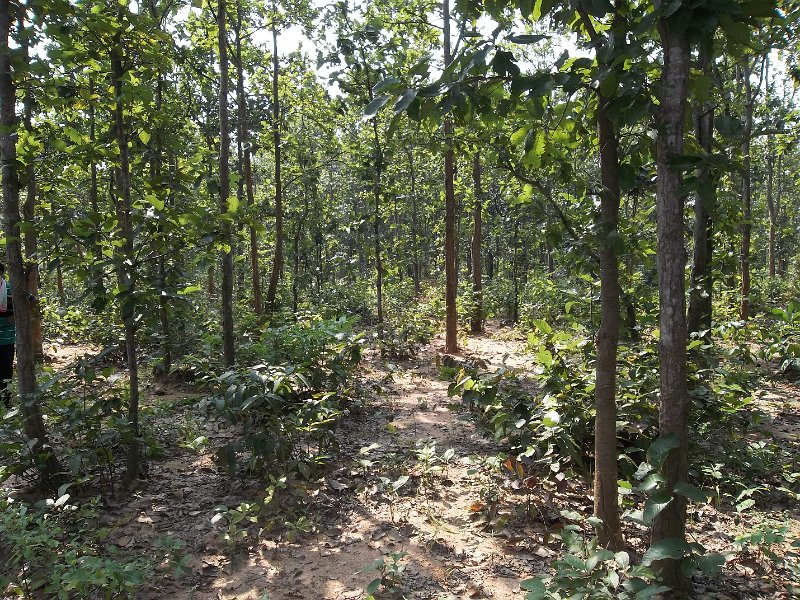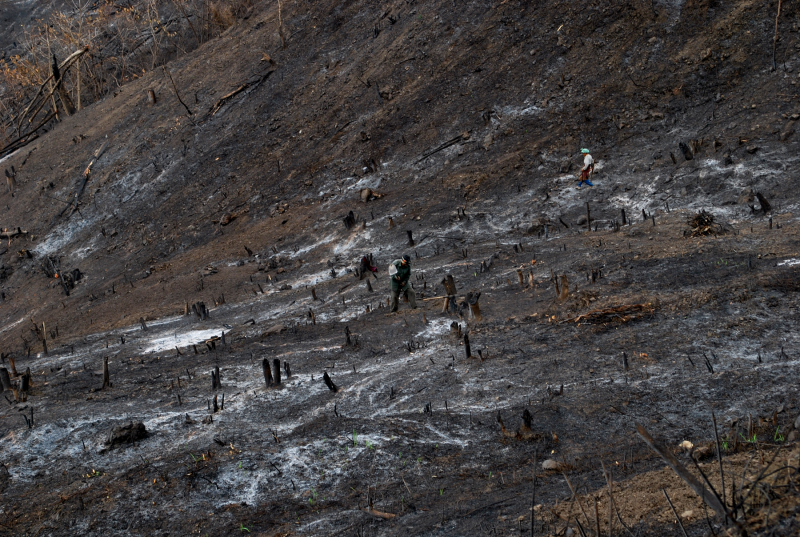Planting trees in reservoir catchments can have both negative and positive effects. . Afforestation of previously bare or heavily eroded areas can control soil erosion, thereby extending the life of the reservoir and improving water quality. Water quality can also be improved if precipitation is able to infiltrate into forest soils before flowing to the reservoir. These potential improvements in water quality need to be balanced against the possibility that less precipitation will be available for reservoir recharge due to the potentially greater interception and evapotranspiration associated with forests. Studies have indicated decrease of water yield after afforestation of the catchment and with the increase of forest age. Forests in reservoir catchments should typically not be managed for timber production, but maintained in as close to a natural state as possible as the fertilization and ground disturbance associated with intensive forest management can have negative impacts on reservoir water quality. Increased acidification and eutrophication after afforestation with conifer species have also been reported. Use of long-lived native deciduous tree species for afforestation instead of fast growing conifers or eucalypts is likely to bring enhanced biodiversity benefits while minimizing water loss.
 |
 |
|
Reservoir catchment with forest Source: http://www.surfat10.com/climate_care/Success%20Story%20of%20Afforestation/ |
Reservoir catchment without forest Source: http://www.iucnffsg.org/freshwater-fishes/major-threats/ |
| Benefits | Level |
|---|---|
|
BP1 - Store runoff
|
High
|
|
BP2 - Slow runoff
|
High
|
|
BP5 - Increase evapotranspiration
|
High
|
|
BP6 - Increase infiltration and/or groundwater recharge
|
High
|
|
BP7 - Increase soil water retention
|
High
|
|
BP8 - Reduce pollutant sources
|
High
|
|
BP9 - Intercept pollution pathways
|
High
|
|
BP10 - Reduce erosion and/or sediment delivery
|
High
|
|
BP11 - Improve soils
|
Medium
|
|
BP12 - Create aquatic habitat
|
Low
|
|
BP13 - Create riparian habitat
|
Medium
|
|
BP14 - Create terrestrial habitats
|
High
|
|
BP15 - Enhance precipitation
|
Low
|
|
BP16 - Reduce peak temperature
|
Medium
|
|
BP17 - Absorb and/or retain CO2
|
High
|
|
ES1 - Water storage
|
Medium
|
|
ES2 - Fish stocks and recruiting
|
Low
|
|
ES3 - Natural biomass production
|
High
|
|
ES4 - Biodiversity preservation
|
High
|
|
ES5 - Climate change adaptation and mitigation
|
High
|
|
ES6 - Groundwater/aquifer recharge
|
High
|
|
ES7 - Flood risk reduction
|
Medium
|
|
ES8 - Erosion/sediment control
|
High
|
|
ES9 - Filtration of pollutants
|
High
|
|
ES10 - Recreational opportunities
|
High
|
|
ES11 - Aesthetic/cultural value
|
High
|
|
PO1 - Improving status of biology quality elements
|
Low
|
|
PO2 - Improving status of physico-chemical quality elements
|
Low
|
|
PO3 - Improving status of hydromorphology quality elements
|
Medium
|
|
PO4 - Improving chemical status and priority substances
|
Low
|
|
PO5 - Improving quantitative status
|
Medium
|
|
PO6 - Improving chemical status
|
Medium
|
|
PO7 - Prevent surface water status deterioration
|
Low
|
|
PO8 - Prevent groundwater status deterioration
|
Medium
|
|
PO9 - Take adequate and co-ordinated measures to reduce flood risks
|
High
|
|
PO10 - Protection of important habitats
|
Medium
|
|
PO11 - Better protection for ecosystems and more use of Green Infrastructure
|
High
|
|
PO13 - Better management of fish stocks
|
Low
|
|
PO14 - Prevention of biodiversity loss
|
High
|
